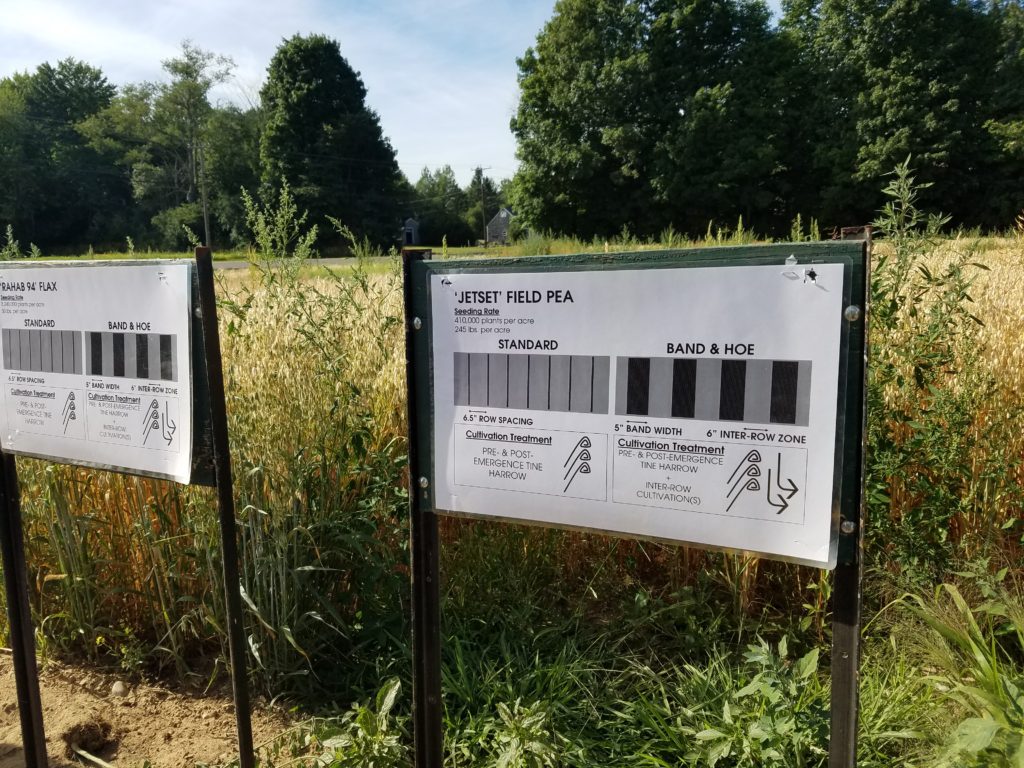
In only its second year on the market, sales of Whole-Farm Revenue Protection (WFRP) insurance have nearly doubled – from 1,110 policies in 2015 to 2,143 in 2016. This is great news for a relatively new risk-management product still technically in its pilot phase.
The National Sustainable Agriculture Coalition (NSAC) was a major proponent of the program which was authorized by the 2014 Farm Bill. We believe WFRP has immense potential to bring risk-management solutions to currently underserved farmers and growers across the country, so this level of growth is extremely encouraging.
Two years ago WFRP was introduced to replace the Adjusted Gross Revenue and Adjusted Gross Revenue Lite policies, which combined never sold more than 1,100 policies in any year.[1] Unlike traditional crop or revenue-based insurance, the whole-farm policy is designed to cover all of a farmer’s crops and livestock under a single revenue policy.
WFRP is the only crop insurance policy available in every state and county, allowing the program to reach a significant number of American farmers. WFRP’s expansive reach includes all types of farm revenue, including local food and niche market sales and sales of organic crops – for which WFRP offers insurance at the premium prices those farmers receive – and crops for which no other type of policy is currently available. It is also one of the best options for dairy and livestock operations to obtain a revenue policy.
In 2016, WFRP was used on at least 44 farms with 10 or more crops, and at least one farm with more than 30 crops. The preliminary average for the number of crops grown under a WFRP policy in 2016 is 3.72. WFRP not only incentivizes diversity by the nature of its coverage, it is also the only crop insurance policy that offers farmers a discount for diversifying their crops –the discount is offered on each crop up to a maximum of seven.
Comparing WFRP’s First Two Years
Liabilities (the total amount of revenue covered) for WFRP increased from $1.1 billion to $2.3 billion from 2015 to 2106, tracking the program’s near doubling of policies sold. This represents around 1-2 percent of total federal crop insurance program liabilities, which were $102 billion in 2015.
In 2015, WFRP was available in 45 states (and select counties in California) and 80 percent of policies were sold in Washington, Idaho, and Oregon. When the program expanded to include to all of California as well as Texas, Oklahoma, Arkansas, Louisiana, and Alabama in 2016, participation levels became more balanced and the percentage of polices sold in the Pacific Northwest fell closer to 50 percent. All five states added to the program in 2016 experienced at least one sale, with all but one (LA) having at least five sales. WFRP policies were sold in 44 states this year, compared to just 33 in 2015.
Of the states where at least one WFRP policy was sold in both 2015 and 2016, 32 states experienced an increase in sales. Only one state, Vermont, had sales (2) in 2015 but no sales in 2016. Idaho had the largest increase in sales (125) in the last year, with Washington and California close behind with increases of over 100 policies sold; the Pacific Northwest states continue to be the leading region in WFRP sales.
These changes are positive indicators that the popularity of the program is growing, and that growth is not strictly the result of the program’s expansion to five new states – most of the increase in sales took place in states where the policy was already available in 2015. This suggests that as farmers and agents become familiar with the product they are increasingly willing to purchase or recommend it.
WFRP Loss Ratio
At this point it is still difficult to discern how WFRP’s loss ratio will compare with other crop insurance policies. Indemnities for WFRP policies are not paid until after a farmer has filed their taxes, which can be in April or even later in the year, following the insurance year.
For 2015, the loss ratio is 1.05, which is only very slightly above the ideal of 1.0 or below. In comparison, individual crop policies have highly variable loss ratios, some exceeding 4.0. While the 20-year average for the federal crop insurance program as a whole is .87, it is also highly variable from year to year; in the drought year of 2012 the overall loss ratio was 1.50.
The Future of WFRP
The WFRP program is clearly moving in the right direction, but with only two years of sales and one year of indemnity data, it is too early to tell if it will fully meet its potential. In order to ensure its success, the NSAC encourages the U.S. Department of Agriculture’s (USDA) Risk Management Agency (RMA) to continuously evaluate the policy during its pilot phase and make any needed changes that will make the program easier for agents and farmers to use.
NSAC applauds many of the early changes RMA has already to WFRP, such as reducing the number of years of needed revenue history from six to four. However, we continue to hear troubling stories of insurance agents steering farmers away from the policy, and want to see that problem addressed head on. In addition, we will work with the agency to try to reduce paperwork, improve access for beginning farmers, and increase outreach and education.
[1] Note: All the policies sold numbers are based on RMA’s Summary of Business “policies earning premiums” column, which may be lower than “policies sold” column.

